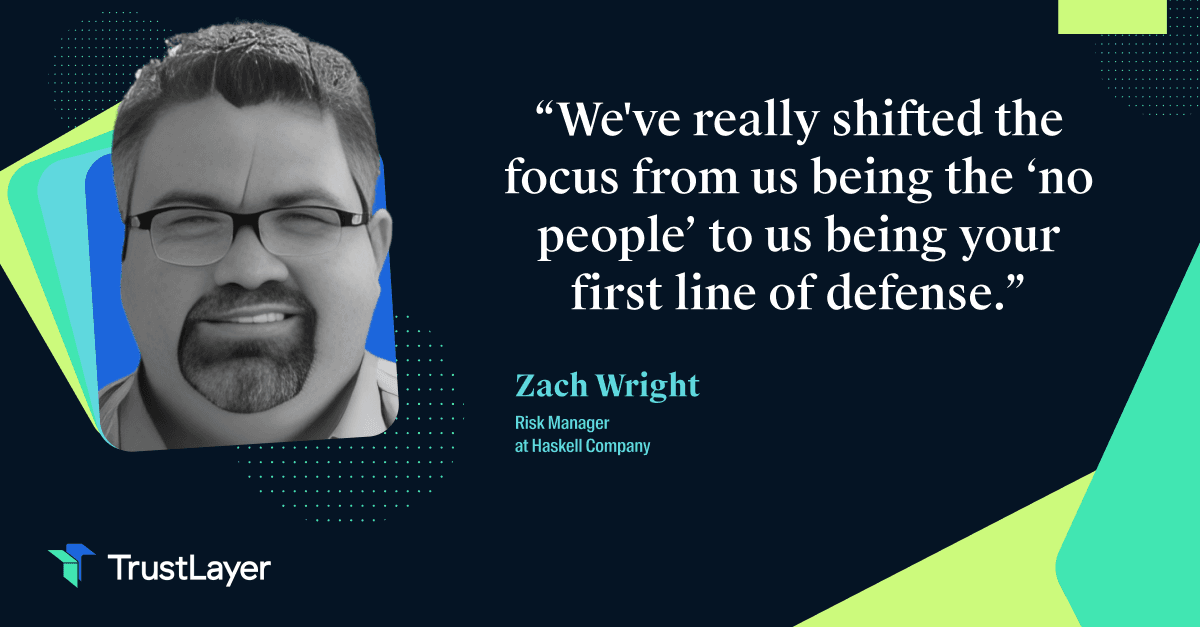In today's ever-evolving business landscape, managing risk is of paramount importance. Each year, companies suffer significant financial losses due to non-compliance, legal issues, and operational inefficiencies. To mitigate these risks, organizations are increasingly turning to risk management software. Specifically designed to streamline risk management processes, this software not only ensures compliance with regulations but also improves operational efficiencies and reduces liabilities. By investing in risk management software for Certificates of Insurance (COIs), businesses can reap a multitude of rewards and stay ahead of the competition.
Understanding Risk Management Software
Before delving deeper into the role of risk management software in Certificates of Insurance (COIs), let's first understand what risk management software entails. At its core, risk management software is a comprehensive tool that enables organizations to identify, assess, monitor, and mitigate risks effectively. It automates and centralizes the entire risk management process, providing businesses with valuable insights and real-time data to make informed decisions.
But what exactly does this mean for businesses? Let's explore further.
When it comes to COIs, risk management software plays a pivotal role in managing and mitigating risks associated with third-party vendors, contractors, and suppliers. By implementing risk management software, businesses can effortlessly track COIs, ensuring that vendors maintain adequate insurance coverage throughout their engagement.
But how does this software make COI management easier? Let's take a closer look.
Risk management software enables organizations to validate, store, and review COIs in a streamlined manner, eliminating the need for manual tracking and reducing the risk of potential liabilities. With automated COI tracking, the software automatically collects and updates COIs, ensuring accurate and up-to-date information.
Moreover, risk management software provides a centralized repository for storing and accessing COIs, eliminating the need for physical paperwork. This document storage and retrieval feature not only saves time but also ensures that important documents are easily accessible when needed.
But that's not all. Risk management software also offers automated reminders and renewals for COIs, reducing the risk of non-compliance. With timely reminders, businesses can stay on top of COI renewals and expirations, avoiding any lapses in coverage that could lead to potential risks.
Additionally, compliance verification is another key feature of risk management software. It provides tools to validate the accuracy and legitimacy of COIs, ensuring compliance with contractual requirements. This feature gives businesses peace of mind, knowing that the COIs they rely on are legitimate and meet the necessary standards.
Lastly, risk management software offers comprehensive analytics and reporting capabilities, providing real-time reporting and insights. This allows businesses to have a clear understanding of their risk landscape, identify potential risks, and take proactive measures to mitigate them.
So, when selecting risk management software for COIs, it is crucial to consider these key features that will best suit your business needs. By leveraging the power of risk management software, businesses can effectively manage and mitigate risks associated with COIs, ensuring a smooth and secure operation.
The Benefits of Implementing Risk Management Software
Now that we have explored the fundamentals of risk management software, let's dive into the many benefits that come with its implementation.
Enhancing Compliance with Regulations
Regulatory compliance is a critical aspect of any business. Failure to comply with industry-specific regulations can result in hefty fines, reputational damage, and even legal complications. Risk management software provides organizations with the tools to track, manage, and validate Certificates of Insurance (COIs), ensuring compliance with regulatory requirements.
With risk management software, businesses can automate the process of monitoring and updating COIs, eliminating the need for manual tracking and reducing the risk of non-compliance. This automation not only saves time but also reduces the chances of human error, ensuring that all necessary documentation is up to date and in line with regulatory standards.
Streamlining Business Processes
Manual COI tracking can be a time-consuming and error-prone task, often involving multiple departments and stakeholders. Risk management software simplifies this process by automating the tracking and verification of COIs.
By streamlining COI tracking, businesses can allocate their resources and personnel more effectively. With automated notifications and reminders, stakeholders can stay informed about upcoming COI expirations, allowing them to take timely action. This not only saves valuable time but also ensures that all necessary documentation is in place, reducing the risk of operational disruptions and delays.
Reducing Operational Risks
Inadequate insurance coverage from vendors and contractors poses significant operational risks for any business. By implementing risk management software, organizations can proactively mitigate these risks.
The software's automated tracking and verification features ensure that vendors possess valid COIs, minimizing the chances of financial losses and legal complications arising from inadequate insurance coverage. With real-time visibility into the status of vendor COIs, businesses can make informed decisions about engaging with vendors, reducing the risk of partnering with uninsured or underinsured entities.
Furthermore, risk management software allows businesses to set up alerts for expired or soon-to-expire COIs, enabling them to take prompt action and avoid potential disruptions in their operations. By staying on top of insurance requirements, organizations can safeguard their assets, reputation, and overall business continuity.
Selecting the Right Risk Management Software
Choosing the right risk management software for your business is a crucial decision. Consider the following factors to ensure optimal selection:
Factors to Consider When Choosing Software
Firstly, assess your business needs and requirements. Understand the scale and complexity of your COI management process to determine the software that best aligns with your specific needs. Additionally, consider factors such as scalability, integration capabilities, and ease of use to ensure seamless implementation and long-term utility.
Moreover, it is essential to evaluate the level of customization offered by the risk management software. Customization can play a significant role in tailoring the software to fit your unique business processes and requirements. Look for software that allows you to configure workflows, reports, and dashboards to match your organization's specific risk management framework.
Evaluating the Software's Performance
When evaluating risk management software options, it is essential to go beyond their advertised features. Reach out to current users or request demos to gain a comprehensive understanding of the software's performance, user-friendliness, and customer support. Consider the software's track record, reputation, and customer reviews to make an informed decision.
Furthermore, delve into the software's data security measures and compliance standards. Data security is paramount when dealing with sensitive risk management information. Ensure that the software adheres to industry best practices for data encryption, access controls, and regulatory compliance to safeguard your organization's data effectively.
The Future of Risk Management Software
As organizations strive to stay ahead in an increasingly competitive environment, the future of risk management software looks promising. Predicted trends include:
Predicted Trends in Risk Management Software
Artificial Intelligence (AI) and Machine Learning (ML) are expected to revolutionize risk management software. These technologies can enhance data analysis, automate risk identification, and improve decision-making processes. By leveraging AI and ML capabilities, businesses can gain valuable insights, detect potential risks in real-time, and optimize risk mitigation strategies.
The Role of AI and Machine Learning in Risk Management
AI and ML technologies enable risk management software to analyze vast amounts of data, identify patterns, and detect anomalies. This powerful combination allows organizations to proactively address risks, adapt to changing market dynamics, and make data-driven decisions. By harnessing the potential of AI and ML, businesses can significantly enhance their risk management efforts and drive sustainable growth.
Furthermore, the integration of Internet of Things (IoT) devices with risk management software is another upcoming trend. IoT devices can provide real-time data on various operational aspects, allowing for more accurate risk assessment and timely intervention. By incorporating IoT data streams into risk management platforms, organizations can improve their risk monitoring capabilities and enhance overall operational efficiency.
Enhancing Risk Management with IoT Integration
IoT devices offer a wealth of data that can be utilized to strengthen risk management practices. From monitoring equipment performance to tracking supply chain activities, IoT integration provides a comprehensive view of potential risks across different business functions. By leveraging IoT insights, organizations can proactively manage risks, streamline processes, and ensure continuity in operations.
Conclusion: The Rewards of Investing in Risk Management Software
Investing in risk management software for COIs offers organizations a multitude of rewards, ranging from enhancing compliance and streamlining business processes to reducing operational risks. By leveraging the automation and centralized capabilities of risk management software, businesses can navigate the complex terrain of risk management with ease. With the predicted trends in AI and ML, the future of risk management software looks even more promising. Embrace the power of technology and secure your business's success by investing in risk management software today.
Recap of the Benefits
- Enhanced compliance with regulations
- Streamlined business processes
- Reduced operational risks
Final Thoughts on Risk Management Software Investment
As the business landscape continues to evolve, risk management becomes an indispensable part of any organization's strategy. Investing in risk management software for COIs provides businesses with the tools they need to effectively manage risks, ensure compliance, and achieve long-term success. With the rewards of enhanced compliance, streamlined processes, and reduced operational risks, the benefits of risk management software investment are undeniable. Choose a solution that aligns with your business needs, embrace technological advancements, and stay one step ahead of the competition.
Ready to transform your risk management strategy and stay ahead of the curve? TrustLayer is your partner in navigating the complexities of COI tracking and compliance verification. As the leading solution built for modern risk managers, TrustLayer simplifies the painstaking process of document collection and verification, freeing you from the administrative burden of manual tasks. Embrace the future of risk management with a platform that's designed to validate trust quickly and efficiently. Don't let outdated processes hold you back. Set up a time to talk with our team and discover how TrustLayer can streamline your operations, saving you time and money, and ultimately driving your business forward.








